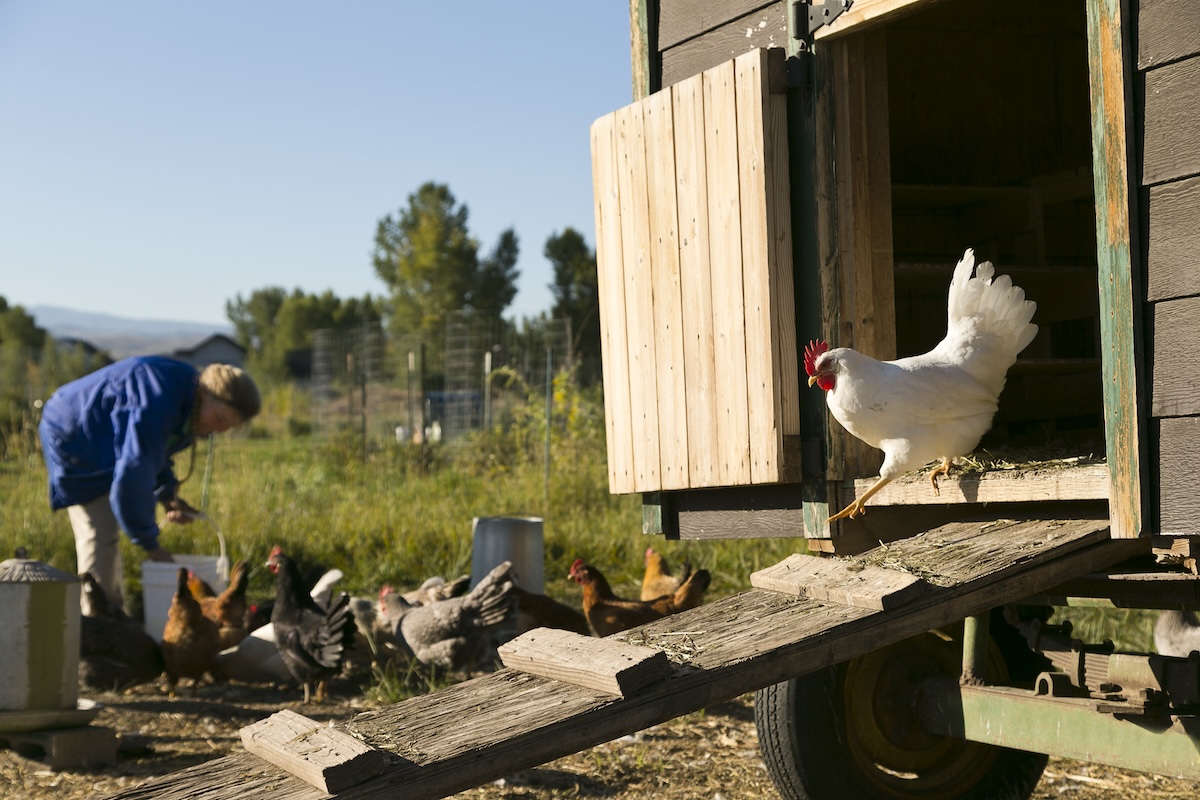

We may earn revenue from the products available on this page and participate in affiliate programs. Learn More ›
In 2020, the number of American households keeping backyard chickens increased to 13 percent. While two-thirds of those homeowners consider their chickens pets, half keep them for fresh eggs. In addition to laying eggs, chickens provide beneficial fertilizer for the garden and entertainment for their keepers. There are other pluses of raising chickens: they eat food scraps and insects.
Chickens are relatively low-maintenance and easy to keep. However, they need proper shelter. If you keep backyard chickens, it’s imperative to have a backyard chicken coop. It’s not difficult to learn how to build a chicken coop to keep chickens safe and happy with the following steps and tips.
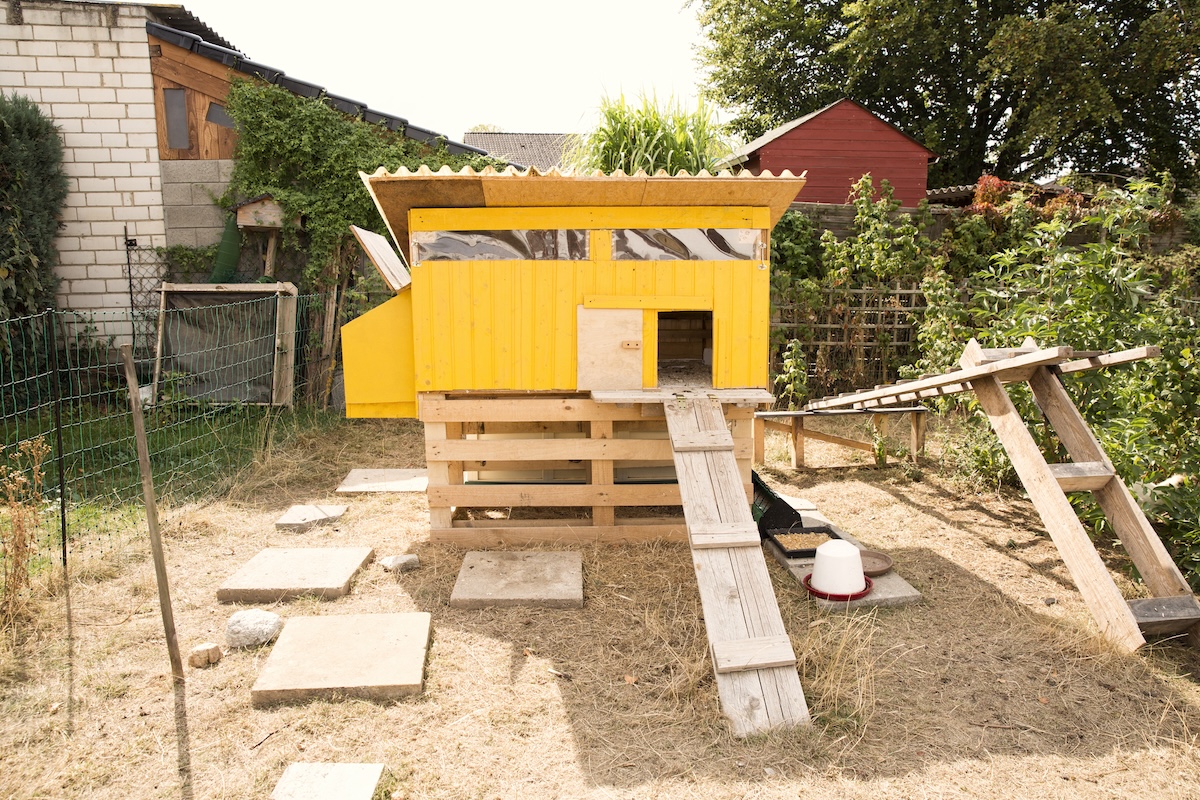
Acquiring Appropriate Permits
Before building a chicken coop, it’s important to ensure it’s legal to have them in your area. Be sure to research local ordinances before getting any chickens. These days, it’s prudent to check homeowners association (HOA) covenants as well as zoning laws.
Before looking at chicken coop designs, determine your jurisdiction—municipality, township, county, parish, or the like. Then, find the ordinances and laws regarding backyard chickens. Some regulations limit the number of backyard chickens a homeowner can have. Other restrictions might prohibit roosters—a consideration when buying chicks, because, even when allegedly sexed, some “pullets” turn out to be roosters. Some regulations establish rules about the location of a coop for chickens, or the distance it must be from other residences. There can even be rules about the size of a chicken house, as well as noise, cleanliness, or enclosure requirements (no free-range). The local rules also might include fees or require permits.
Size and Location
When building a chicken house, make sure it’s sized appropriately for the number of chickens you plan to have. A small chicken coop won’t hold a big flock. Plan on at least 4 square feet of coop space, 10 square feet of run space, and 1 foot of perch space each for heavy chicken breeds, 3 square feet for light chicken breeds, and 2 square feet of coop space for bantam chickens, advises Chris Stoltzfus, owner of Happy Farmer. Add one nesting box for every four hens.
Stoltzfus recommends building chicken coops close enough to the house “that you can see the coop from your windows to make sure that your chickens are alright,” with the run facing the house “so that you can see the chickens when they are outside.”
While every municipality or HOA might have different rules, the required distance of a chicken coop from property lines typically ranges from 10 to 90 feet, and 20 to 50 feet between coops and residences.
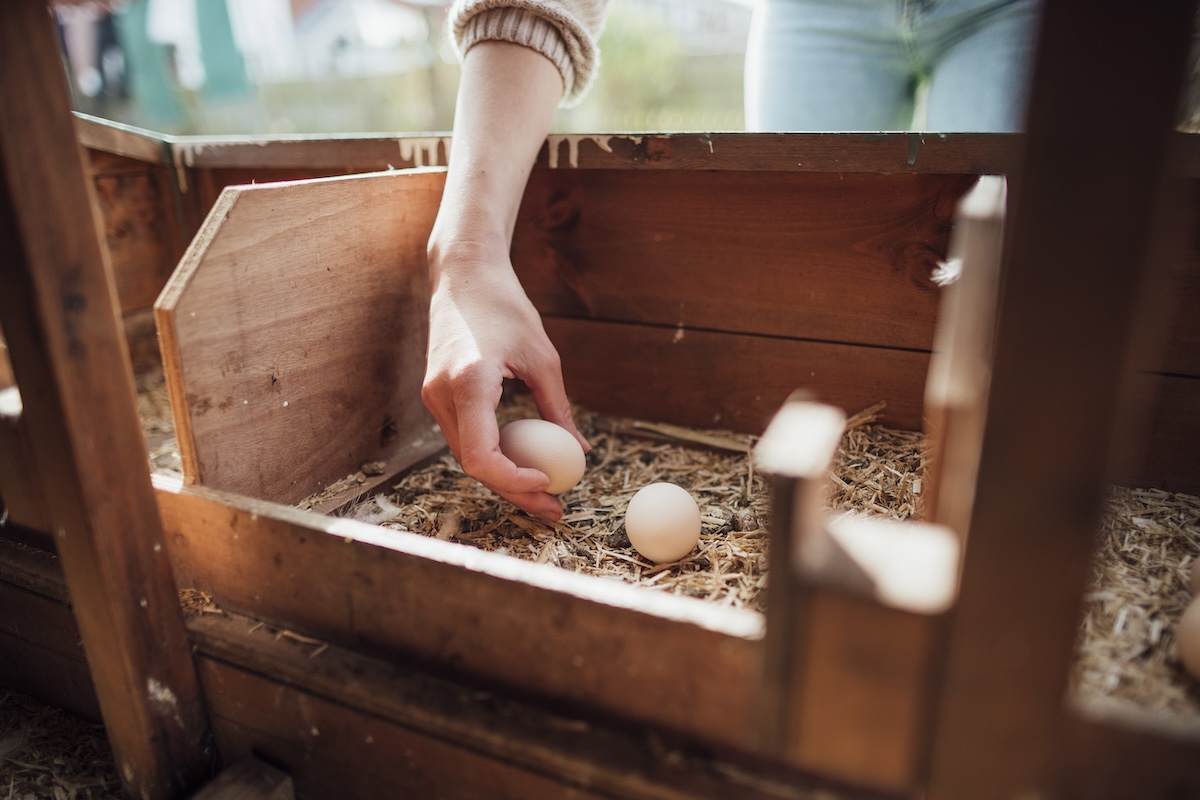
Essential Chicken Coop Features
Whether you plan to build a DIY chicken coop or buy a premade structure, ensure that the design includes certain basic features. Bonus features and appearance can be convenient niceties for the flock and its tender or for the flock owners. However, providing features necessary for the chickens’ health and well-being is more important than decorating a chicken coop for aesthetic appeal.
Roosting bar or perch
At night, chickens instinctively seek elevated perches to roost so they are safer from predators and parasites while they sleep. Perches should be at least 1 foot off the ground, flat, wood, and 2 to 4 inches wide. Metal or plastic pipes are too slippery and become cold in the winter. Allow 8 to 12 inches of roosting space per chicken along perches and bars.
Nesting boxes
“If you are raising hens, nesting boxes are necessary,” Stoltzfus says. Chickens prefer to lay their eggs in quiet, secure places and will use available nesting boxes—making egg collection convenient. Fill boxes with straw or other bedding material for a cozy nesting spot. Add one for every four hens.
Chicken run
When making a chicken coop, add a covered run for safe outdoor exercise. Birds will be happier —and healthier—if given space to run, forage, flap their wings, dust-bathe, soak up the sun, and breathe fresh air. By spending time in the run, they make less mess in the coop, reducing the risk of parasite infestations and other infections. The opportunity to forage can increase egg production and reduce stress and incidence of disease.
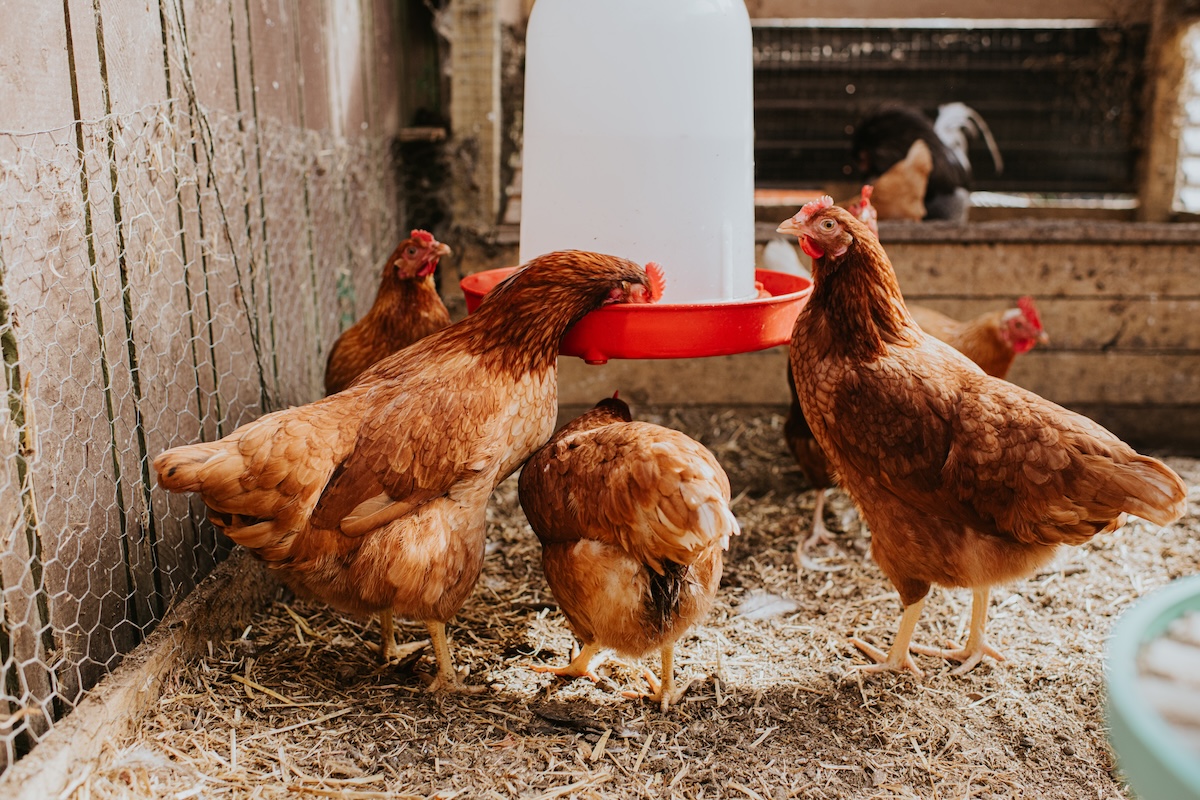
Waterers and feeders
Chicken feeders can be suspended from the ceiling or placed on the ground. Similarly, waterers are best hung or elevated above the ground to reduce dirt, bedding, food, or droppings being kicked into them, contaminating the water. Chickens drink about 16 ounces of water each day, so size the waterer accordingly.
“A coop water tank is a feature that will keep your waterer full for a number of days so you don’t have to worry about your chickens running out of water,” Stoltzfus says. “It is mounted on the coop and uses gravity to keep the chicken waterer filled.”
Ventilation
All chicken coop plans should include ventilation. Dust (from feather dander, bedding, and droppings) and moisture (from breath and droppings) can cause ill thrift in chickens. Without ventilation, ammonia levels can become dangerous, and in summer, so can temperatures. Even when cold temperatures arrive with winter, coops need ventilation to bring in fresh air through windows, pop doors, floating roofs, wall-roof gaps, skylight vents, holes cut in walls, soffit vents, fans, or other options.
Two types of doors
Walk-in coops allow convenient access for caretakers to gather eggs, refill feeders and waterers, clean the coop or perform other maintenance, and easily access the chickens. But there may be times—especially in cold, windy, rainy, or otherwise inclement weather—that you don’t want that large door open.
Pop doors are small, square doors the chickens use to go in and out of the coop; typically, they are no larger than 12 inches. Chickens actually prefer using pop doors, as the smaller size makes them feel safer. Best placed 6 to 12 inches above the floor of the coop, they can be hinged or “guillotine-style.”
Electricity
“Electricity is not necessary, but can make life a lot easier,” Stoltzfus says. Although a solar power light package or a battery light kit can alleviate the need to use electricity to power lights, there are other benefits of running electricity to the chicken house. It enables you to add a timer that automatically closes the pop door at night for safety and to add a base heater to keep metal waterers from freezing.
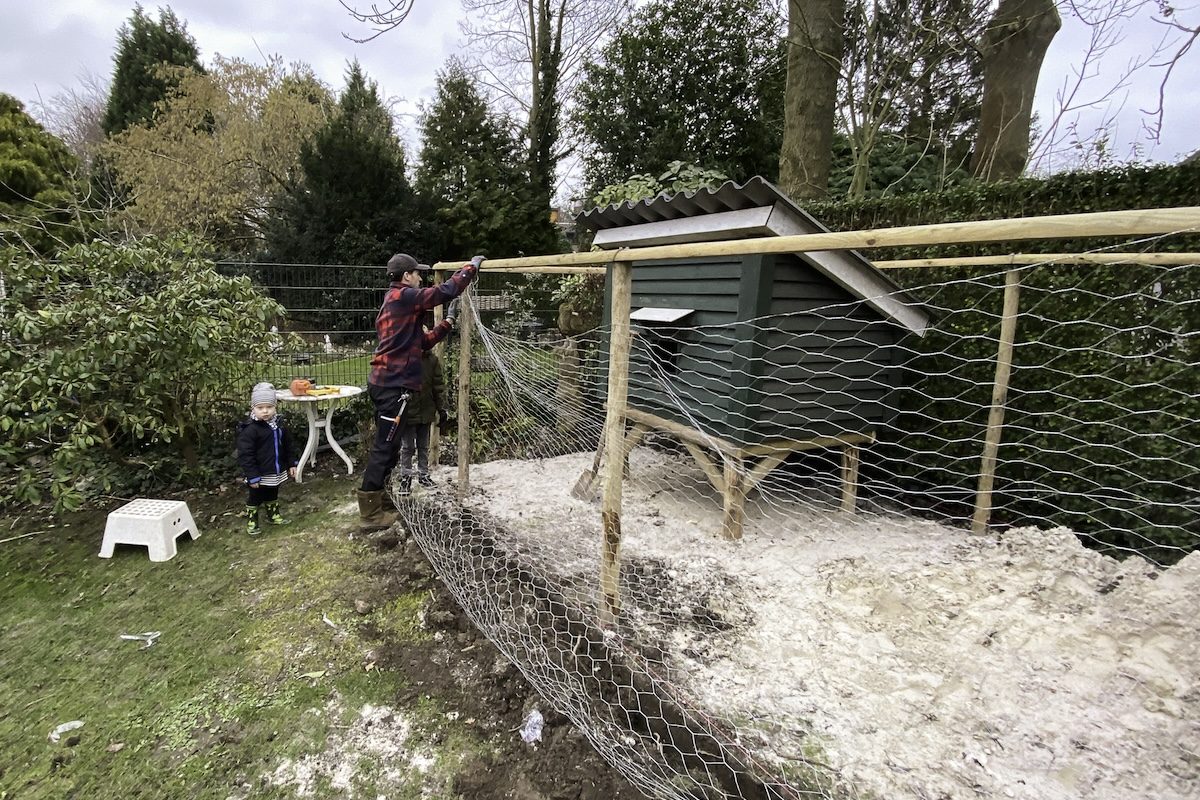
Basic Steps for Building a Chicken Coop
Building a chicken coop isn’t much different from building a shed—or even a house (on a less complicated level). As with any construction project, remember to “measure twice and cut once.”
- Select the right location. Select a level area that won’t flood, that is sufficient distance from property lines and residences, and is easily accessible (and visible) from the house. Remove/trim intruding nearby shrubbery and tree branches that can harbor predators.
- Select a coop plan. Choose the size and style best suited to house the type and number of birds you intend to keep.
- Build the frame. Be sure to build a solid, sturdy frame, preferably using screws. Check that the angles of the frame are square.
- Build the roof. Screw trusses onto the frame and affix a ridge rail across the top.
- Add walls and roof panels. Screw precisely cut plywood panels to the frame, taking care that they lie flush along the edges. Vents can be cut at this time.
- Install the floor. Unless you plan to have a dirt floor, attach plywood panels with screws to form the floor. For added protection against burrowing predators, lay hardware cloth beneath the floor panel.
- Add doors. Include a human-size door and a chicken-size pop door.
- Decorate. Paint the exterior, add (or build) nesting boxes and roosting bars.
- Shingle the roof.
- Add a run and fencing. Hardware cloth is the preferred material to keep predators out, but chicken wire can be used if kept above heights of 3 feet.
Final Thoughts
If you’re looking for sustainability, a source for fresh eggs, or simple enjoyment from companion animals, keeping chickens is a worthwhile endeavor. Learning how to build a chicken coop will provide hens and their young with shelter from the elements, protection from predators, and a quiet, safe spot to lay their eggs.
